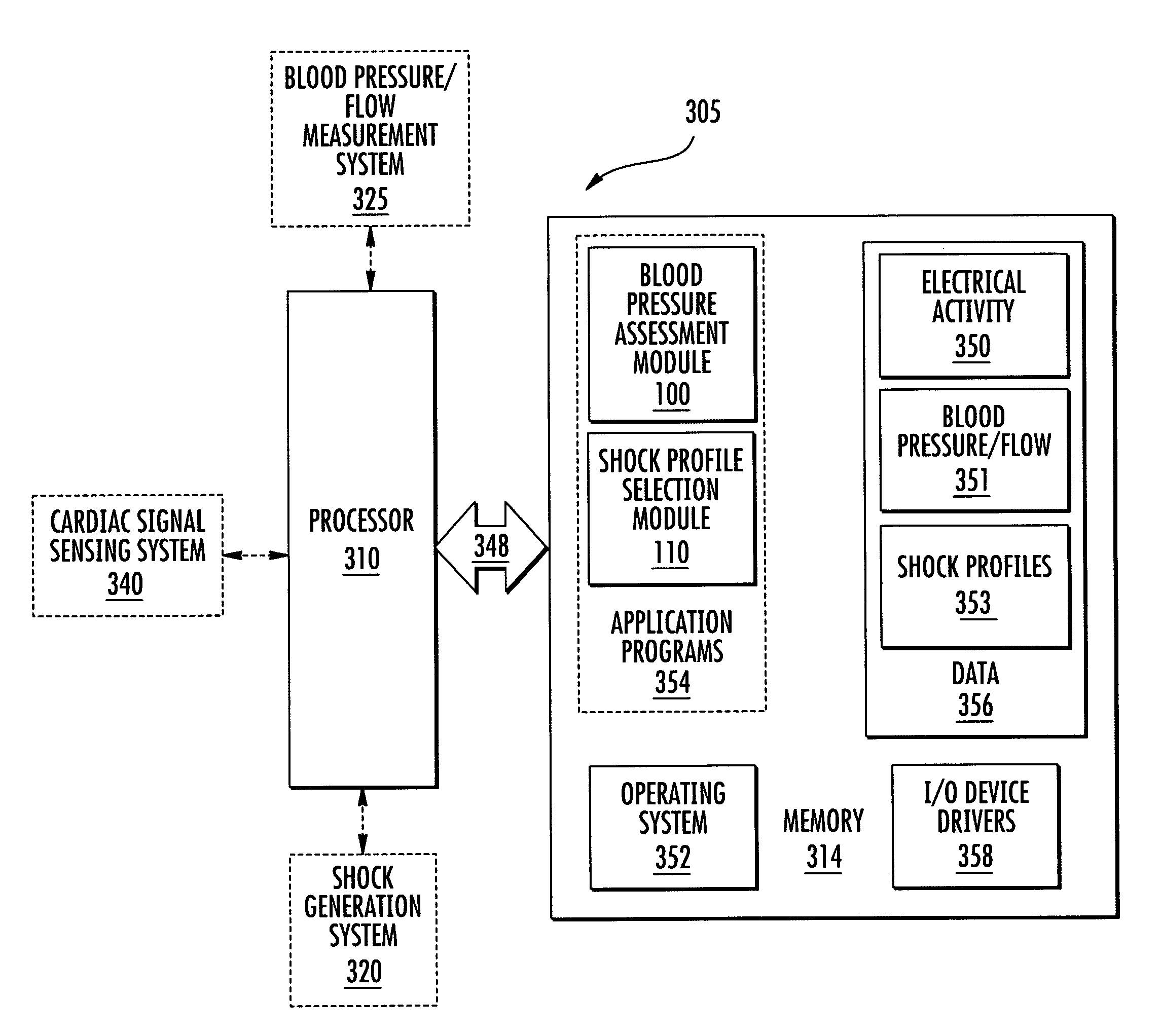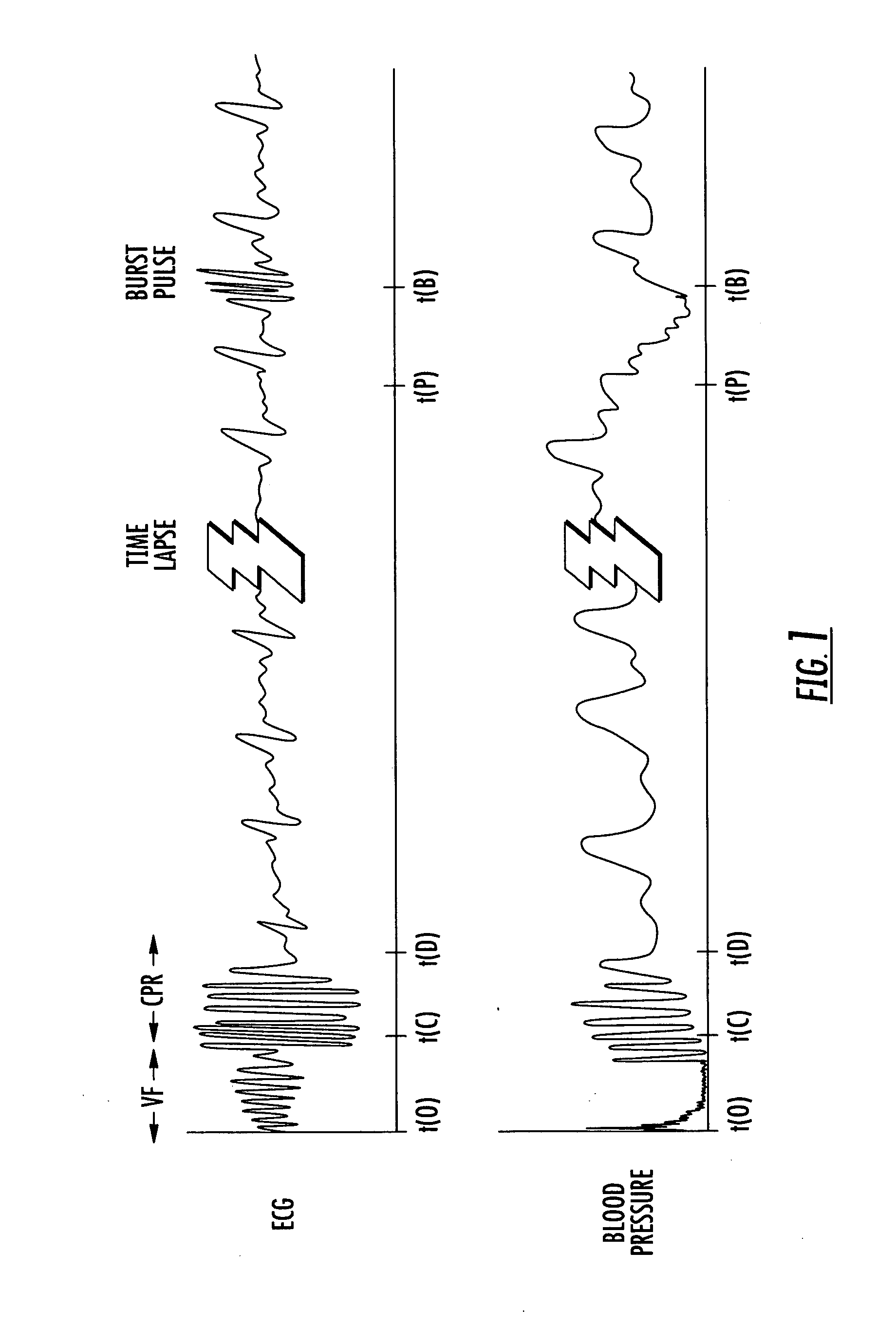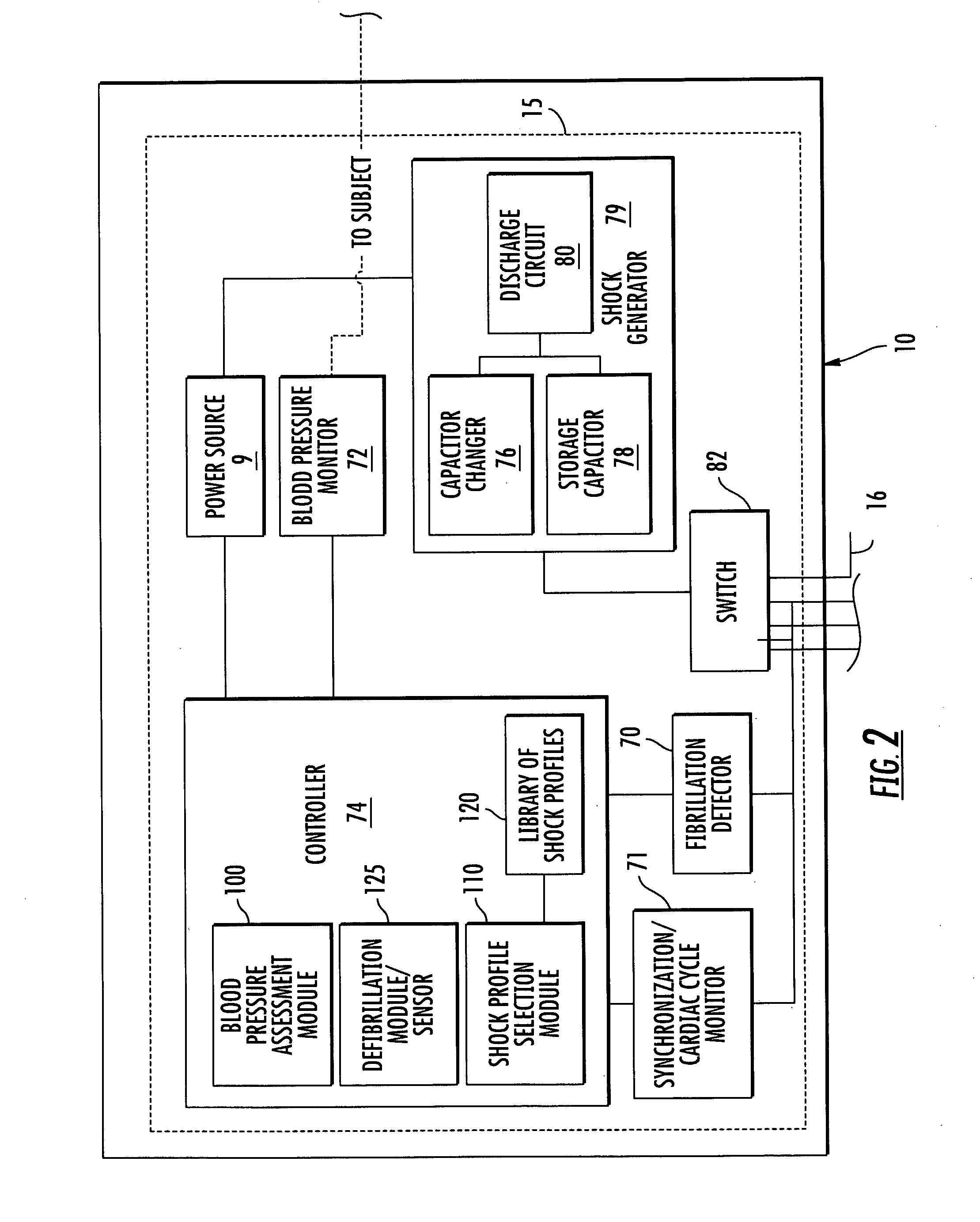Method and system for reducing cardiac low pressure states
a low pressure state and cardiac technology, applied in the field of methods and systems for reducing cardiac low pressure states, can solve the problems of poor recovery prospects, low survival rate, and many patients remain at risk, and achieve the effect of reducing the risk of pulseless electrical activity (pea) and reducing the risk of pea
- Summary
- Abstract
- Description
- Claims
- Application Information
AI Technical Summary
Benefits of technology
Problems solved by technology
Method used
Image
Examples
example
[0059]Eight pigs were studied. Defibrillation was performed following eight minutes of electrically induced ventricular fibrillation followed by cardiopulmonary resuscitation until a return of spontaneous circulation occurred. Cardiopulmonary resuscitation was stopped after the return of spontaneous circulation. If systolic blood pressure decreased to less than 50 mmHg following the return of spontaneous circulation, burst pacing was given through external defibrillation electrode pads, which were timed to occur before the T wave of the electrocardiogram so that ventricular fibrillation is not induced. A packet of 6 pulses each lasting 1 millisecond was delivered beginning 30 milliseconds after the sensed R-wave from a catheter electrode in the right ventricle. The time between the onset of successive pulses in a packet was 10 milliseconds and each pulse was a square wave having an amplitude of 10 Amps. One packet of pulses was delivered every 3 seconds. The number of packets was ra...
PUM
 Login to View More
Login to View More Abstract
Description
Claims
Application Information
 Login to View More
Login to View More - R&D
- Intellectual Property
- Life Sciences
- Materials
- Tech Scout
- Unparalleled Data Quality
- Higher Quality Content
- 60% Fewer Hallucinations
Browse by: Latest US Patents, China's latest patents, Technical Efficacy Thesaurus, Application Domain, Technology Topic, Popular Technical Reports.
© 2025 PatSnap. All rights reserved.Legal|Privacy policy|Modern Slavery Act Transparency Statement|Sitemap|About US| Contact US: help@patsnap.com



